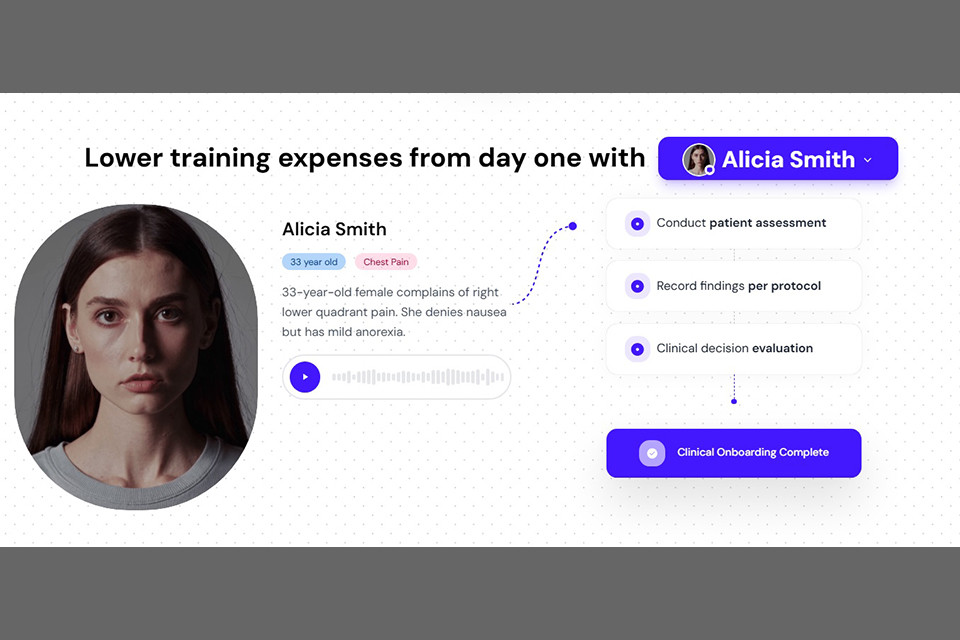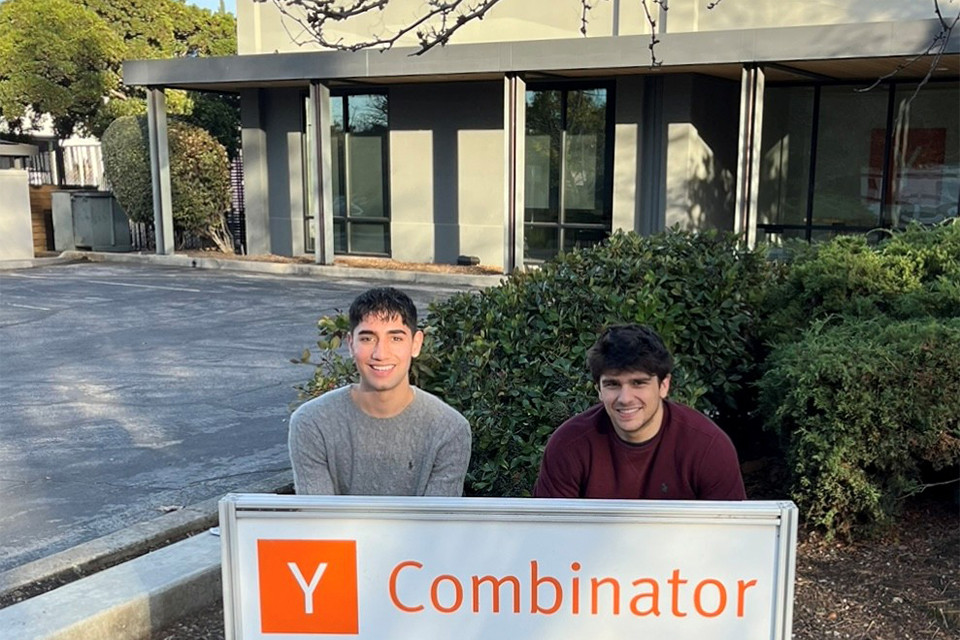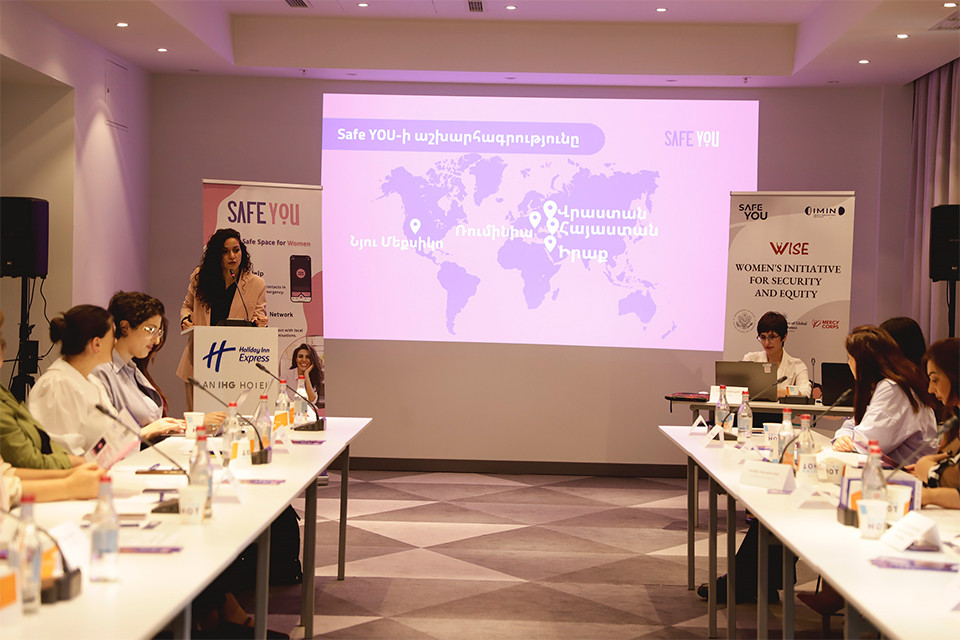-

-

-

Vrishank Saini
-

Vrishank Saini and Tigran Bdoyan
17:08 | 28.03.25 | Articles | exclusive 23448
Tigran Bdoyan’s SimCare AI is Transforming Medical Education
AI is transforming healthcare education, and 20-year-old Tigran Bdoyan’s SimCare AI is at the forefront of this revolution.
SimCare AI has grown from a simple tool helping medical students into a fast-growing company that has been accelerated by Y Combinator and has already raised over $2 million.
In an exclusive interview with Itel.am, Tigran Bdoyan talked about his early startup experiences, the idea behind SimCare AI, the application of AI technologies, and his business vision in the healthcare sector.
First Startup experience and the attempt to become a lawyer
I was born and raised in the United States, growing up and attending school in Ohio. My first introduction to entrepreneurship came at 14 when I started selling video game hacks online. I was always interested in tech and programming, and I loved the process.
At 16, I co-founded my first startup, building devices to help businesses analyze traffic flow in their venues. We raised some money, but since we were all still in high school, it ultimately didn’t work out. However, it was an incredible learning experience.
After that, I worked as a software developer at a small energy company while still in high school. I started as an intern, but by my second year, I was their senior developer.
Then I went to the University of Chicago, initially thinking I wanted to be a lawyer, but that path didn’t pan out. While doing machine learning research, I met my future co-founder in a fraternity. We were both working on different startups, often discussing co-founder disputes and helping each other navigate challenges. Eventually, we realized we were philosophically aligned in how we wanted to run a business and decided to start one together. Though at first, we didn’t know what it would be.
The foundation of SimCare AI and the inspiration behind its idea
My co-founder was applying to medical schools and had to take the CASPer exam, a test that evaluates ethical and clinical reasoning. It presents scenarios like, 'You see someone stealing lab results, what do you do?' He failed the exam, which meant he didn’t perform well on ethical reasoning.
To help him study, I built a simple AI tool that generated practice questions, allowed him to respond within a set time, and provided feedback. The alternative was hiring an $8,000 tutor, so this was a much more accessible solution.
We shared the tool on medical school forums and Reddit, and it unexpectedly went viral. What really caught our attention was that students in non-English-speaking countries like the Philippines and India were using it for weeks, far beyond the typical one-week study period. That made us realize there was a deeper need we hadn’t initially considered.
 Vrishank Saini
Vrishank Saini
As we investigated further, we found a major bottleneck in healthcare training, specifically in non-didactic skills. While fact-based learning can be scaled easily (like memorizing information from textbooks), one of the biggest challenges in healthcare is training professionals on how to communicate effectively with patients, navigate complex situations, and extract critical information in a way that leads to better outcomes.
Currently, medical schools hire actors to simulate patient interactions. This system is costly, inefficient, and disliked. Actors aren’t healthcare professionals, they must be retrained for every scenario change, and their feedback is often generic and rushed. Additionally, these sessions require multiple cameras, making the experience overwhelming.
We saw an opportunity to improve this process and set out to create an AI-driven solution for medical schools. Even while we were still in school, we knew we were onto something meaningful and were excited to pursue it.
Overcoming Challenges in AI-Powered Medical Training
Building AI-driven medical training tools comes with unique challenges, especially in ensuring accuracy and realism in simulations. Instead of training our own AI models from scratch, we take a retrieval-augmented generation (RAG) approach. This allows us to reach the level of precision needed for real-world medical training without the high costs and complexity of custom models.
Our technology relies on genetic workflows, which help structure AI interactions in a way that mimics real medical conversations. While we may train our own models in the future for faster and more cost-efficient solutions, our current approach has been key to building a reliable and scalable system.
Expanding User Base: Medical Schools, Industry, and Beyond
Right now, our main users include medical students, counseling students, and social work students. However, we’re expanding rapidly, and in the next six months, we expect to see a major shift towards active doctors, nurses, and therapists using our platform in professional settings.
Currently, SimCare AI is actively used in 30 institutions, with 20 to 60 learners per institution using it weekly. We’re also working closely with a large enterprise partner that will serve as our go-to-market channel for nearly every medical school in the U.S. in the coming months.
The YC Experience: Focus, Execution, and Growth
It was amazing. I think that YC deserves all the hype, but not for the reasons people expect it to. There's no secret thing they give you, or there's no access to some tool or some people that's going to change the game, but YC is really good at doing two things which are critical to early-stage startups. They set our expectations correctly. So we're a bunch of neurotic young people who grew up comparing ourselves to everyone, and when you're around lots of other people who are tackling similar problems to you, you adjust your expectations to what's normal.
 Vrishank Saini and Tigran Bdoyan
Vrishank Saini and Tigran Bdoyan
The second thing was they just help you focus on what actually matters, which is usually just either you're building your product or you're talking to customers, and everything else out of that is just fake.
Growing the Team and Preparing for Series A
Currently, our core team consists of my co-founder, a former pre-med student at the University of Chicago. One engineer, a former YC founding engineer with deep technical expertise, and one go-to-market salesperson.
We recently closed a $2 million round at a $15 million cap and are now focused on scaling the team and preparing for Series A funding. Given the increasing inbound interest, we’re in a strong position to expand.
Connecting with the Armenian Tech Ecosystem
I’ve always had ties to the Armenian tech scene, my father was an Armenian founder, and we raised funding from Triple S Ventures, an Armenian VC firm based in LA. While I’ve been in touch with Armenian founders in San Francisco, we haven’t yet formed direct business partnerships within the Armenian ecosystem.
Adapting to the Market: From Medical Schools to the Healthcare Industry
Initially, selling to medical schools was a slow process not because they didn’t like our product, but because of the heavy bureaucracy and long academic sales cycles. We realized we needed a more agile market, so we pivoted to selling to counseling schools.
That shift changed everything. Every meeting was turning into a pilot program, and adoption skyrocketed. But even as that was taking off, we started receiving significant inbound interest from telehealth companies, clinics, accreditors, and other industry players.

Recognizing the potential, we made another strategic shift focusing on the broader healthcare industry as our primary market. That decision has paid off tremendously. We’ve barely needed to send any outreach emails; nearly all our business has come inbound, and the demand has been overwhelming.
What sets us apart from competitors is that we’re the only company building for all of healthcare. Our evaluation and patient simulation systems are designed to work across every healthcare field, from social work to medicine. We can also tailor them to any level whether it’s a first-year medical student or an experienced practitioner in a specialized field.
This scalability not only gives us the potential to become a unicorn company but also allows us to develop more sophisticated evaluation models that can handle even the most complex edge cases.
Nune Grigoryan

17:29 | 24.09.25 | Articles
Jacopo Losso on Cross-Border Investments and Why Armenia Attracts Angels







